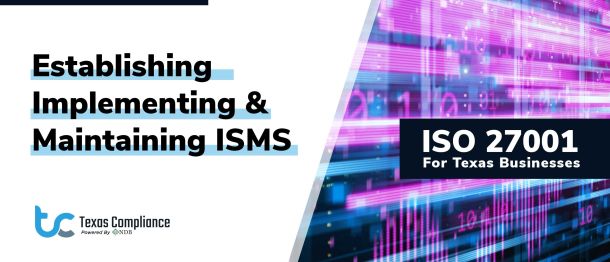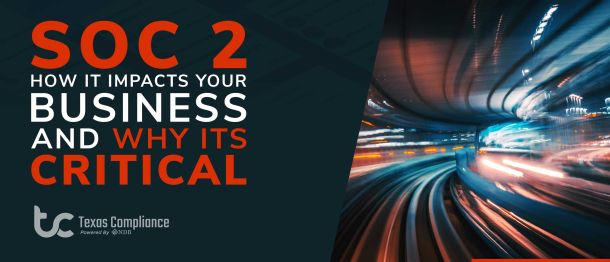
7 Things You Need to Know About SOC 1, SOC 2 and SOC 3 Reports and Assessments
7 Things You Need to Know About SOC 1, SOC 2 and SOC 3 Reports and Assessments
As businesses everywhere put more emphasis on data security, SOC 1, SOC 2 and SOC 3 reports and assessments, are becoming more and more common. The world economy is more reliable on technology than ever before. Data breaches can cause a domino effect that can be felt across the globe. As a result, thousands of businesses are turning to SOC reports and assessments in order to get a clear picture of the effectiveness of their internal controls. They want to know – and their customers want to know – any weaknesses that may be present so they can have a plan of action to address those weak spots.
The use of SOC reports – especially SOC 2 and SOC 3 reports – will only continue to increase in the coming years. This will especially be the case for technology-focused service organizations, such as cloud computing vendors, ISPs, data centers, managed service providers, and others.
Here are seven things you should know about SOC 1, SOC 2 and SOC 3 reports, courtesy of the experts in SOC compliance with NDB at texascompliance.org.
1. It’s time to accept – and embrace – SOC reports.
For years, the gold standard of data security reporting was SAS 70. However, it eventually became apparent that this standard simply wasn’t robust enough to take into account all the complexities of a global economy. SSAE 18 has overtaken SAS 70, leading to the development of SOC (System and Organization Controls) reporting options. Organizations can now choose from three reports, the aforementioned SOC 1, SOC 2 and SOC 3.
SOC 1 reports and assessments are the emerging “champion,” if you will, among companies that want to take a hard look at their data security and ICFR strategies. But if you’re part of a technology-centered organization, you’ll be more interested in SOC 2 and SOC 3. These reports are geared toward software development companies, SaaS, IaaS, PaaS companies, and more. But SOC 2 is applicable to any company, regardless of industry. You can learn more about these reports by sending us an email to
2. SOC 1 delivers multiple reporting options.
SOC 1 reports are broken up into two types. SOC 1 Type 1 reports look at the effectiveness of an organization’s data security efforts on a specific date, such as December 18, 2020. Type 2 reports, on the other hand, look at a broader timeframe – at least six months. Reports performed in accordance with the SSAE 18 standard are designed to analyze controls for service organizations that are closely aligned to a concept referred to as Internal Control over Financial Reporting (ICFR). However, the standard also applies to a wide range of third-party entities.
3. SOC 2 continues to gain momentum.
While SOC 1 reports may be more common, SOC 2 reports are gradually gaining a great deal of acceptance as well. As you learned earlier, SOC 2 reports are designed more for technology-centric organizations. SOC 2 reports follow the AT 101 standard, while SOC 1 reports follow the SSAE 18 standard.
One of the reasons SOC 2 reports are gaining in acceptance is that they incorporate what are known as the Trust Service Principles, or TSPs. These include the following:
• Security
• Confidentiality
• Privacy
• Availability
• Processing Integrity
Not every organization that needs a SOC 2 report will have to incorporate all the TSPs in their particular report. An expert with NDB can let you know which TSPs your report will need to cover.
4. SOC 3 reports are important as well.
SOC 3 reports are similar to SOC 2 reports in many ways. Both incorporate the TSPs, and both adhere to the AT 101 standard. In addition, both SOC 2 and SOC 3 reports are growing in acceptance, and they’re both viable alternatives to SOC 1 reports. The biggest difference is that SOC 3 reports don’t go into the technical depth of SOC 2 reports. However, SOC 3 reports do offer both WebTrust and SysTrust seals, both of which can be used to show your compliance with data security mandates.
5. Policies and procedures are both critical aspects of SOC compliance.
Many organizations may view developing data security policies and procedures as not worth the hassle. But since we live in a world of ever-increasing regulatory compliance mandates, they’re now a necessary evil of sorts. You not only need to develop them; you need to follow them to the letter.
NDB can make it easier than ever to do both. We provide our customers with comprehensive SOC 1 and SOC 2 Policy Packets that can save you thousands of dollars and hundreds of hours. These contain all the supporting documentation you need – including information security procedures, policies and more – so you can do the best possible job of preparing for your SOC audit.
When you do have an audit, you need to remember that your auditor will ask for your policies and procedures. It will very likely be the first thing the auditor will want to see. By using our Policy Packet templates, you’ll be able to produce that documentation faster than you ever imagined possible. Contact NDB today to learn more.
6. Creating an asset inventory can protect your IT landscape.
This basically means having a clear picture of all IT systems you have in place, including where they’re located. Every business should have a comprehensive list that shows their laptops, servers, networking devices and all other IT equipment. Not only does this make good business sense, it will also help speed the SOC audit process.
7. NDB can help with all your SOC reporting needs.
As you’re already well aware, business today is more complex than ever before – especially when it comes to complying with ever-increasing data security mandates. It’s imperative that you find the time and money to have SOC 1, SOC 2 or SOC 3 assessments once a year.
The best way to ease the pain of dealing with compliance audits is to turn to NDB. Not only will we provide you with a high-quality assessment, we also offer fixed fees. You’ll know exactly what you’ll pay, so you won’t have to deal with any unpleasant surprises. We’ve been in the business of regulatory compliance for a long time, and NDB knows how to help you navigate the complexities. Whether you need policy writing, readiness and scoping assessments, or any other service we offer, we’ll be here to help.
Get in touch with NDB today to learn more about us or the services we provide. You can call 713-331-5492 (Houston), 214-272-0967 (Dallas), or 512-522-4943 (Austin), or send an email to

